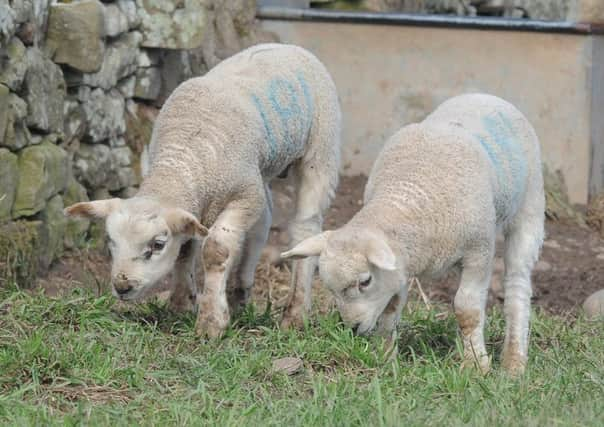Vets hope lamb disease will be limited to few cases
This article contains affiliate links. We may earn a small commission on items purchased through this article, but that does not affect our editorial judgement.


Confirming the cases, SAC Consulting Veterinary Services said the diagnoses followed an increase in the numbers of affected lambs identified in England and Wales during the winter of 2016-17.
Head of the vet services, George Caldow, said that while it was difficult to say just how widespread the disease might be, indications were that the number of cases should be small.
Advertisement
Hide AdAdvertisement
Hide Ad• READ MORE: In search of best practice to tackle worms in sheep
He said the virus which caused the disease was spread by midges, and if infection occurred around the second month of pregnancy in sheep and between three and five months in cows it could cause damage to the central nervous system of the developing foetus, resulting in deformities in lambs and calves “which are not compatible with life”.
Caldow said that with no diagnosis of Schmallenberg virus in either early lambing flocks or year-round calving dairy herds in Scotland, it looked unlikely that the virus had been widespread in the midge population when it had been at its peak.
He said that as the midge population declined as winter approached, the lower numbers around when the main Scottish spring lambing flock was at its most vulnerable – December and January – should have limited the spread of any infection.
“Therefore it may be that only small number of ewes will have been infected with few affected lambs being born – and these are more likely to be in flocks in the southernmost part of the country.”
He said that the limited information available so far suggested that the midge population in some parts of southern Scotland became infected in late autumn, probably due to the gradual spread north of infected midges.
But he warned that there could be a higher risk to cattle mated in the summer of 2017, especially at the edge of the northward progression of infected midges.
Advertisement
Hide AdAdvertisement
Hide Ad“As in the previous epidemic it may be that only very limited spread of infected midges will occur in Scotland. Experience of the disease elsewhere has shown it to have a patchy distribution with some areas having very little evidence of infection despite the disease being present in adjacent locales,” said Caldow.
He said that farmers seeking advice on possible incidents of Schmallenberg in their animals were advised to speak to their vet, adding that they would put them in touch with SAC Consulting Veterinary Services which offered a full range of tests at their disease surveillance centres.